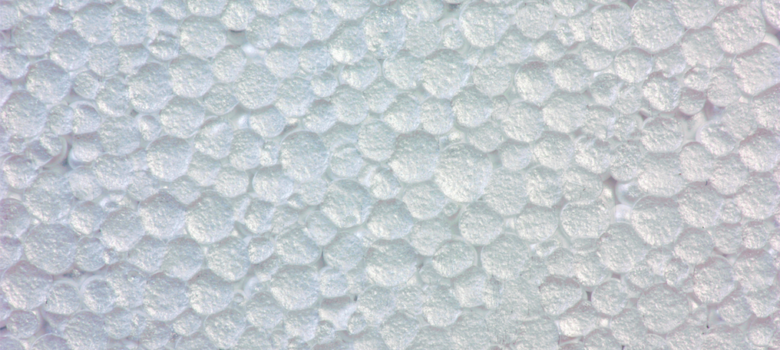
EPS is the most commonly used material in external wall insulation. Whilst Rockwool is sometimes specified, the fact that it needs a greater thickness to achieve the same results and costs more to supply and install means that EPS is used on the vast majority of jobs.
However EPS, unlike Rockwool, is an oil-based product and therefore gets its environmental credentials questioned regularly. The fact is, pretty much all modern building and insulation materials are quite carbon-intensive to produce. Cement, for example, produces huge amounts of CO2 in production. Steel takes huge amounts of energy to manufacture, as do insulating materials like Rockwool and phenolic board.
In this blog however, we are going to take a closer look at EPS and the whole cycle from production to disposal – exactly what effect does it have on the environment?
Manufacturing EPS
EPS is predominantly air – in fact in the average block around 98% of the space is actually trapped air. To make EPS, a mixture derived from oil is fed into what is called a pre-expander. This machine heats the mixture to around 100 degrees, which expands the material from densities of 630kg/m3 down to 10-30kg/m3. This process traps air in the closed-cell structure of the EPS creating a very light product.
The material is then matured in silos, which allows the vacuums in the cells to slowly permit air to diffuse into the structure. At this stage the product is simply beads of polystyrene. The final stage is to mould the beads into the required shape – in the case of insulation this is simply large blocks, which can then be cut down into sheets of the necessary thickness.
In making EPS, there is very little waste generated. Energy usually comes from a conventional gas boiler and water used in the process is recycled. The main environmental impact at this stage will be from the original ingredients.
EPS and your wall
EPS insulation on your wall is extremely inert. It will react very minimally in response to heat or cold, ideal when it is being exposed to the elements, but it also has fantastic insulating properties, making it one of the best products to use for insulating a property – it requires around 20% less thickness to achieve the same performance levels as spun glass wool or fibre insulation.
Furthermore it is a great product to work with. It is really easy to shape and cut, lightweight and easy to move around the site. It does not absorb water, making it good as a moisture barrier and it is compatible with nearly all other construction materials because of its inert nature.
Disposal of EPS – Recycling and Landfill
EPS is a very visual product. It is the first thing that gets spotted in pictures of landfill. But in actuality, a lot of EPS is recycled. It is a relatively easy product to recycle, it is just very low in value, which is why some recycling centres don’t take it – it is not profitable to recycle. That said, if you want your EPS to be recycled, this is perfectly possible.
Whilst some EPS is recycled, it often does end up in landfill, and one of the big problems with this is that it is so bulky. EPS only takes up 1% of the weight in landfill, but the volume of landfill is much higher than this. There is also some evidence that styrene, one of the constituents of EPS, is a human carcinogen; it is important that the EPS is either recycled, or that the landfill is contained and not allowed to reach streams and waterways where it might be ingested by animals. These chemicals concentrate as they work their way up the food chain, so humans are going to be at risk if the EPS is allowed to move into the wider environment.
So, in conclusion, to minimise damage to the environment, EPS should be recycled. EPS is 100% recyclable, so there is no reason not to do so and ensure that as little as possible is sent to landfill.












No Comments yet! Be the first one.